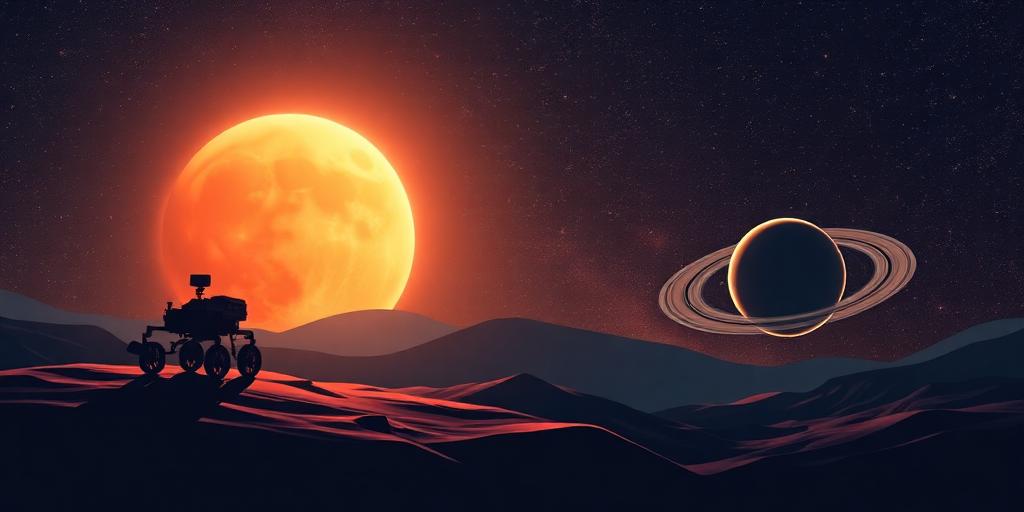The cosmos continues to beckon, and humanity's response is an ever-accelerating cadence of ambitious space missions. As we advance further into the 21st century, the next decade promises a series of groundbreaking endeavors designed to deepen our understanding of the universe, seek out life beyond Earth, and pave the way for a sustained human presence off-world. This article will delineate several key upcoming space missions that are poised to redefine our cosmic perspective.
The Red Planet's Persistent Allure: Mars Missions
Mars remains a primary target for international space agencies, driven by the quest for evidence of past or present life, and the long-term goal of human exploration. While Perseverance continues its groundbreaking work, the future of Martian exploration is exceptionally vibrant.
- Mars Sample Return (MSR): A monumental collaborative effort between NASA and ESA, MSR aims to bring samples collected by the Perseverance rover back to Earth for unparalleled scientific analysis. This complex mission involves multiple launches, including an orbiter, a lander, and a small rocket to lift the samples from the Martian surface. The data gleaned from these pristine samples could provide definitive answers regarding Mars's past habitability and potential for ancient microbial life. Understanding the Mars Sample Return timeline is crucial for appreciating the intricate planning involved.
- Martian Moon Exploration (MMX): Led by JAXA, Japan's space agency, MMX is set to visit Phobos, Mars's largest moon. The mission will collect samples from Phobos and return them to Earth, offering insights into the moon's origin—whether it is a captured asteroid or a fragment of Mars itself. This mission will also provide valuable data for future human missions to the Martian system.
These projects represent significant strides towards understanding Mars's geological and astrobiological history, while also laying groundwork for future human expeditions.
Returning to Our Celestial Neighbor: Lunar Exploration Projects
After decades, the Moon is once again a focal point for space exploration, not merely as a destination but as a proving ground for deep-space capabilities and a potential site for resource utilization.
- Artemis Program (NASA): NASA's flagship lunar program aims to return humans to the Moon, including the first woman and first person of color, establishing a long-term human presence. Artemis II will conduct a crewed lunar flyby, while Artemis III is slated for a human landing near the lunar south pole. This initiative is pivotal for demonstrating technologies and operational strategies for future deep-space missions, including those to Mars.
- Commercial Lunar Payload Services (CLPS): NASA is partnering with commercial companies to deliver scientific instruments and technology demonstrations to the Moon. These missions, using privately developed landers, are critical for scouting resources, testing new technologies, and conducting localized science ahead of human landings. Such lunar exploration projects diversify access to the Moon.
These missions signify a global push to establish a sustainable presence on and around the Moon, fostering international collaboration and commercial innovation.
Beyond Our Solar System: Next Generation Space Telescopes
The success of the James Webb Space Telescope (JWST) has underscored the immense value of advanced observatories. The next wave of space telescopes promises even more ambitious capabilities.
- Nancy Grace Roman Space Telescope (NASA): Formerly WFIRST, Roman is designed to study dark energy, exoplanets, and general astrophysics. With a wide field of view, it will survey vast regions of the cosmos, creating detailed maps of the universe and discovering thousands of exoplanets using microlensing. Its observations will be complementary to JWST, offering a broader perspective on cosmic evolution.
- European Space Agency's ARIEL (Atmospheric Remote-sensing Infrared Exoplanet Large-survey): Scheduled for launch in the mid-2020s, ARIEL will study the atmospheres of hundreds of exoplanets. By analyzing the chemical composition and thermal structures of these atmospheres, ARIEL will provide crucial insights into planet formation and evolution, and help assess the habitability of worlds beyond our solar system. This mission will significantly advance exoplanet atmospheric characterization.
These observatories will extend our vision, probing the earliest moments of the universe and meticulously characterizing worlds orbiting distant stars.
The Search for Life: Icy Moon Explorers
Jupiter's moon Europa and Saturn's moon Enceladus are considered prime candidates for hosting extraterrestrial life due to their subsurface oceans. Upcoming missions are poised to investigate these enigmatic worlds.
- Europa Clipper (NASA): This mission will perform numerous close flybys of Europa, gathering detailed measurements to determine if it has the potential for life. Its instruments will peer through Europa's icy crust, searching for evidence of a subsurface ocean, understanding its composition, and identifying potential plumes of water vapor. This mission is critical in the ongoing search for extraterrestrial life within our solar system.
The data from Europa Clipper will be instrumental in guiding future missions, potentially including a lander, to directly sample Europa's ocean.
Conclusion: A New Era of Exploration
The upcoming years represent a golden age for space exploration. From returning humans to the Moon and Mars, to probing the atmospheres of exoplanets, and seeking signs of life in icy oceans, these future space exploration endeavors are not just scientific pursuits; they are testaments to human ingenuity and our insatiable drive to understand our place in the cosmos. Each mission carries the potential for transformative discoveries, pushing the boundaries of technology and expanding the horizons of human knowledge.




